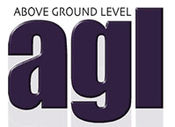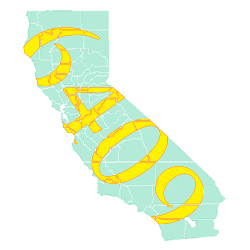 AGL Magazine‘s Wireless Infrastructure Conference will be coming to Irvine Marriott in Irvine, California on April 18, 2013. If you want to know about what’s happening in the trenches of wireless, and where those trenches lead, this is the conference to attend.
AGL Magazine‘s Wireless Infrastructure Conference will be coming to Irvine Marriott in Irvine, California on April 18, 2013. If you want to know about what’s happening in the trenches of wireless, and where those trenches lead, this is the conference to attend.
AGL’s regional conferences are, in my opinion, one of the best sources of current industry information, and one of the most cost effective. This is the conference I would attend even if I were not a speaker. But as you’ve just figured out, I’ll be a speaker at this conference. I’ll be speaking about Assembly Bill 162, more properly called the “Wireless Industry Gift and Public Exclusion Act of 2013.”
The registration fee is only $95.00, and there is a substantially lower registration fee for government registrants. Ask me for the government discount code; I’ll be glad to provide it.
Here is the current conference schedule (subject to change):
| 8:00 a.m. to 9:00 a.m. | Networking Continental Breakfast Welcome: Rich Biby |
| 9:00 a.m to 10:00 a.m. | Site Acquisition: Where Will All the Wireless Go?You have all heard the statistics on wireless growth, but where will all these antennas and nodes be located? This session will teach you how to meet the zoning challenges and take advantage of the opportunities in innovative antenna siting. Stay on top of the trends in siting macrocells, microcells and DAS, whether it is a greenfield development or on rooftops or on street furniture. Our panel of experts will fill you in on the best practices in siting on federal properties, churches and schools. |
| 10:00 a.m. to 10:55 a.m. | Wireless Business Trends Roundtable This session will scrutinize the business side of the wireless industry, from tower brokerage to Wall Street to carrier class Wi-Fi. Stay up to date on the critical factors that have an impact on our industry, whether it is the latest mergers, cash infusions or LTE deployment news. You will learn where the opportunities are to increase your profits, whether you own towers or integrate wireless systems. |
| 11:00 p.m. to 12:00 p.m. | LTE and the Art of Achieving and Maintaining Tower Integrity With LTE systems rolling out at a furious pace, can proper equipment installations keep up? This session will teach you a wide range of best practices for deploying equipment on towers and keeping them in working order. Plus, keys for keeping tower climbers safe. |
| 12:00 p.m. to 1:00 p.m. | Lunch |
| 1:00 p.m.to 2:00 p.m. | Small Cell, DAS, Wi-Fi – the New Wireless Frontier While it goes by different names – metrocell, picocell, microcell, DAS node and carrier-grade Wi-Fi – the result is the same, increased capacity and coverage enhancement. You will learn the latest technology trends in the deployment of multiple, smaller coverage area nodes. Additionally, you will learn the market drivers. All of which are critical to playing in this quickly evolving space. |
| 2:00 p.m. to 4:00 p.m. | Small-cell Vertical Market Breakout Sessions: You will be able to take advantage of being a part of a small group, which will engage in a deeper discussion of the various wireless vertical markets. Speakers dealing with four verticals in small-cell wireless –– health care, campus/stadium, commercial real estate and municipal Wi-Fi –– will move from group to group every 30 minutes, answering questions and giving opinions on the opportunities and challenges each vertical represents. Using this more intimate setting, this session gives you time to talk with our experts about your particular interests in the topics and to share ideas with others.Vertical 1: Tracking the Heartbeat of Wireless in the HospitalModerator will lead a discussion on the role of wireless in today’s health care organizations. Hospitals offer possibilities for numerous wireless applications, and hospitals represent one of the most complex environments in which to introduce new technologies.Vertical 2: From the Campus to the Stadium, Wireless Goes Small Bringing smaller cells – whether DAS, Wi-Fi or small cell – to campuses and stadiums is a challenging, high-profile venture. Moderator will lead a discussion of this unusual mix of outdoor and indoor deployments that must be geared for large influxes of users who are there only for short periods.
Vertical 3: Municipal Wi-Fi –– The Key to the Intelligent City? Municipalities can be an integral part of the wireless superhighway and if they embrace that role, they will improve their cities on multiple fronts, including revenue and business development. Moderator will explain two critical components –– wireless infrastructure and fiber backhaul –– that cities must have to stay current with mobile technology development. Vertical 4: Commercial Real Estate — Connections Trump Locations. In-building wireless networks have elevated the provisioning of wireless communications from an afterthought to the status of an intelligent amenity for commercial real estate development. Corporate site selection committees now list broadband connectivity among the top three criteria. Learn how wireless is helping real-estate developers gain new tenants and increase revenue by marketing their properties to smartphone users. |
| 4:00 p.m. to 4:45 p.m. | Conference Wrap up Moderator: Richard P. Biby, P.E., Publisher, AGL magazine |
Following is a link to the online registration site…If you’re a government, call me first for the discount code: CLICK HERE TO REGISTER.



